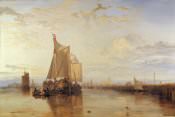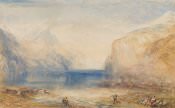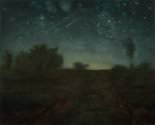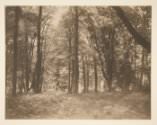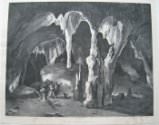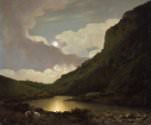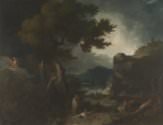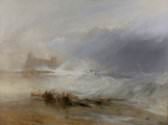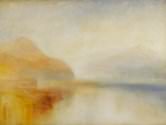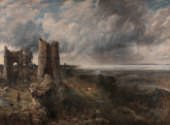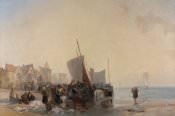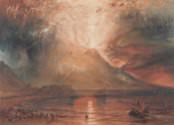Staffa, Fingal's Cave

Staffa, Fingal's Cave
Fingal’s Cave, on the uninhabited Scottish island of Staffa, inspired countless Romantic artists, poets, musicians, and naturalists after Sir Joseph Banks discovered the site and published a full account of its topography in 1772. The cave’s unique columnar basalt walls, formed through volcanic activity in deep time, served as evidence of the earth’s violent origins among the Vulcanists in the late eighteenth century. Joseph Mallord William Turner visited the cave in 1831 to record scenery for Lord of the Isles, an illustrated collection of poems by Sir Walter Scott set at Staffa. The voyage also inspired this oil painting, which offsets the ancient geological marvel with a modern steamer, suggesting a passage of time from the earth’s early history to the industrial era.
